A history of the microcomputer industry in 300 adverts
In a private room at the Winter Consumer Electronics Show in Chicago in January 1977, Commodore showed the world's first complete "personal computer" - the PET 2001 - an "appliance" micro that for the first time could be taken out of the box, plugged in and used by regular people without a soldering iron.
Soon, Tandy and Apple joined in and the market grew steadily, but then Commodore and Sinclair launched cheap home computers in the early 80s that changed everything.
The market exploded from tens of thousands of machines a year to millions, as famous 1970s names like Cromemco, IMSAI, Nascom and MITS were swept away. Micro companies were suddenly worth $1 billion dollars and their employees were millionaires. Hundreds of companies launched hundreds of incompatible machines. Price wars were started, old scores were settled and companies were destroyed.
Eight bits made way for 16 and 32 in the space of a few years. For a while Britain led the world in manufacture and adoption, with 80% of all computers sold in Europe being sold in the UK.
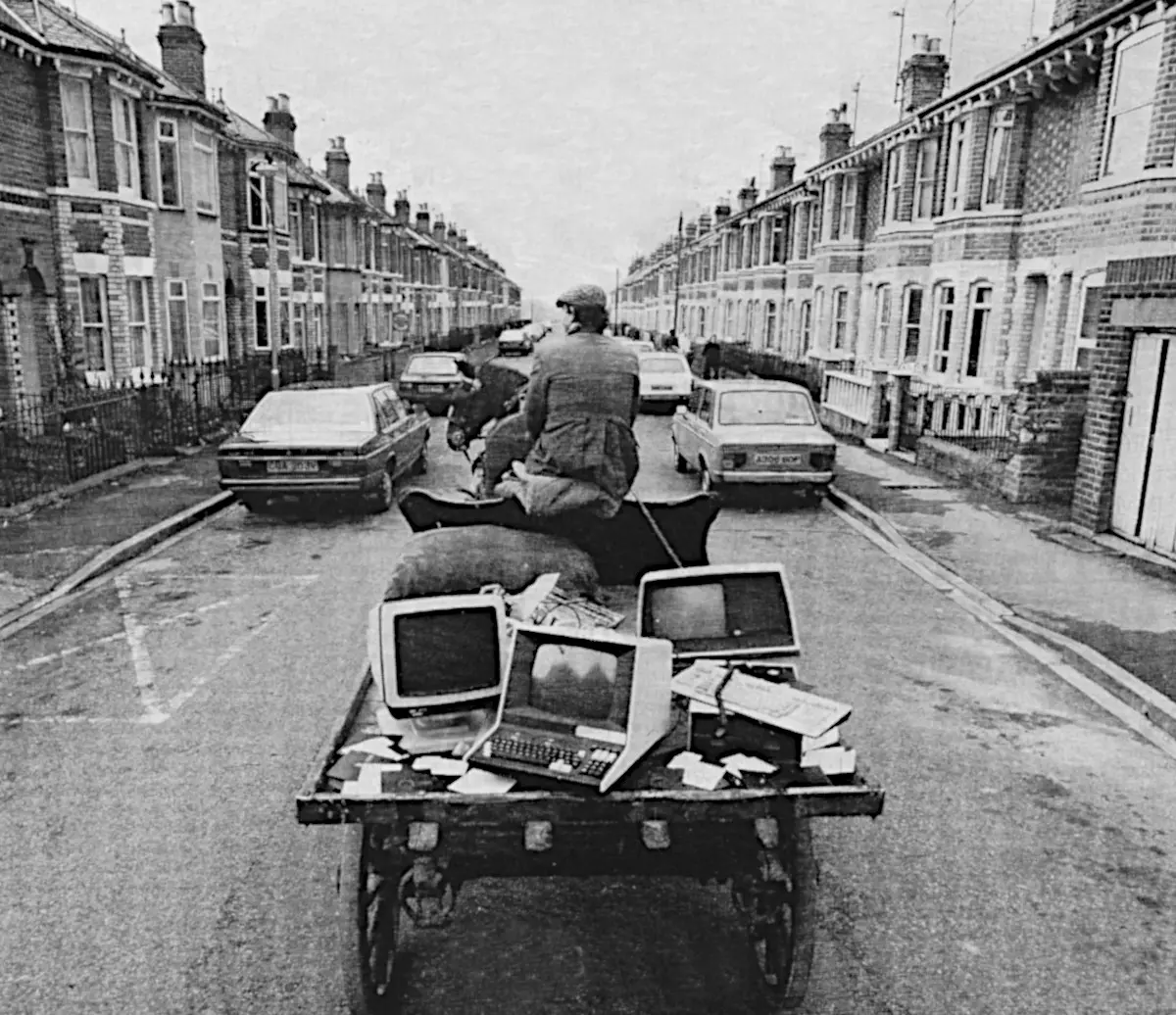
The fate of many microcomputer companies. From a Business Operating Software advert in Personal Computer World, June 1986.
Then the 8-bit market reached saturation and more companies imploded - Sinclair was sold for its name and assets only, Acorn almost didn't make it and a raft of also-rans fell by the wayside - Camputers, Dragon Data, Elan, Oric and Jupiter Cantab to name but a few. Even big names like Timex and Texas Instruments were burned.
Meanwhile, the sleeping giant that was IBM launched its 5150 at the end of 1981 and watched as it slowly but inevitably over the next few years became the standard. Other companies cloned it, copied and improved it and soon the only game in town was the IBM PC.
From the latter half of the 1980s, every micro company and its dog was building generic beige boxes, and people wanted the same beige boxes at home and work. The home computer as a concept was dead, and the "wonder years" were over.
This collection of over 300 adverts attempts to tell something of that story...
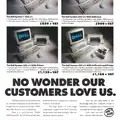
Dell
February 1993
No wonder our customers love us
It's another advert for Dell, and one which effectively sums up the end of the home computer era. The entry-level Dell System 333 s/L shown in the advert was available for £859 p...

ACT/Apricot
January 1993
The new Apricot Xen-LS II. Everything you could unreasonably demand from a computer.
Apricot had started out as ACT - Applied Computer Techniques - in 1965 as a computer time-sharing bureau. Its first major break came in 1982 when it signed a deal with Chuck Pedd...
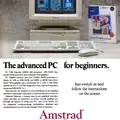
Amstrad
January 1993
The advanced PC. For beginners.
It's nearing the end of the line for Amstrad's micros, although unlike many other companies which went bankrupt or suddenly exited the industry to avoid bankruptcy, Amstrad seemed...

Data General
May 1985
The new Data General/One. The only industry-standard PC you can use on a camel
Here's another one of those adverts where it's tempting to question whether the claims made had ever actually been tested in the real world. It's for Data General's One - the 4.5...
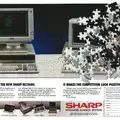
Sharp
March 1985
The new Sharp MZ5600. It makes the competition look positively untogether.
Launched nearly two years before in September 1983, Sharp's MZ5600 - the name trying to hold on to a lineage going back to the MZ-80 - was an MS-DOS-compatible IBM sort-of-clone, ...
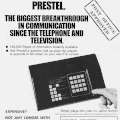
Tangerine
March 1981
Prestel - the biggest breakthrough in communication since the telephone and television
By late 1981, Tangerine - a company founded in 1978 as a video display card manufacturer but which by now was more famous for its Microtan 65 computer - had released the Tantel Pr...
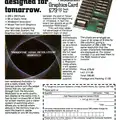
Tangerine
November 1981
Step by step with the computer system designed for tomorrow
Tangerine Computer Systems had been founded in 1979 in St. Ives, Cambridgshire - once the home of Clive Sinclair's Radionics company. Its first product had been the well-received...
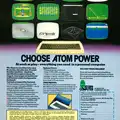
Acorn
November 1981
Choose Atom Power
Right on the cusp of Acorn's launch of the Proton - the computer better known as the BBC Micro - comes this advert for its existing Atom, the 1980 machine which evolved from the e...
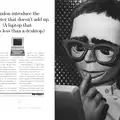
Tandon
April 1990
Tandon introduces the computer that doesn't add up
It's 1990 and laptops still haven't quite reached the proportions of what would be considered a "modern" laptop, however the price - according to Tandon at least - does seem to ha...
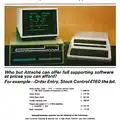
Pertec
May 1979
The Attaché Business System - The only system designed and supported exclusively for business applications
Launched in the UK in May 1979, the Attaché was said by Practical Computing in its May 1979 issue to be "in a sense, Pertec's first microcomputer", in that unlike the company's pr...
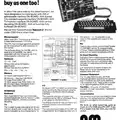
Nascom/Lucas
July 1979
If you can buy more on one board for under £300 - buy us one too!
This is the advert which launched the Nascom 2 - an update of the popular Chris Shelton-designed Nascom 1, which was first launched in 1977. The Nascom 2 came with the faster 4MH...
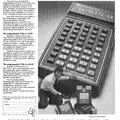
Texas Instruments
November 1978
New from Texas Instruments. The world's most powerful pocket calculators. For the easiest problem solving ever.
From the company which "made micro-electronic calculators and watches possible" - Texas Instruments - comes a contender for Commdore's "button monster" crown, albeit with a mere 4...
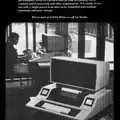
Butel-Comco
March 1981
Butel-Athena: The ideal Small Business System
From another company that appears to have left no trace whatsoever - Butel-Comco Limited of Southampton - comes this advert for the Athena, one of a handful of microcomputers that...
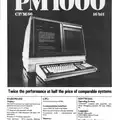
Micro Networks
September 1981
Micronetworks introduce PM1000
Here's a seemingly one-off advert for what also seems to be a one-off machine: the PM1000 from Micro Networks, of Pall Mall in London. It's unusual because it's one of only a han...
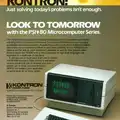
Kontron
October 1981
Kontron: Look to tomorrow with the PSIΨ80 Microcomputer Series
It's another advert aimed at OEMs rather than the end user, this time from Kontron Mikrocomputer GmbH of Echning, near Munich in what was West Germany. Demonstrating its target m...